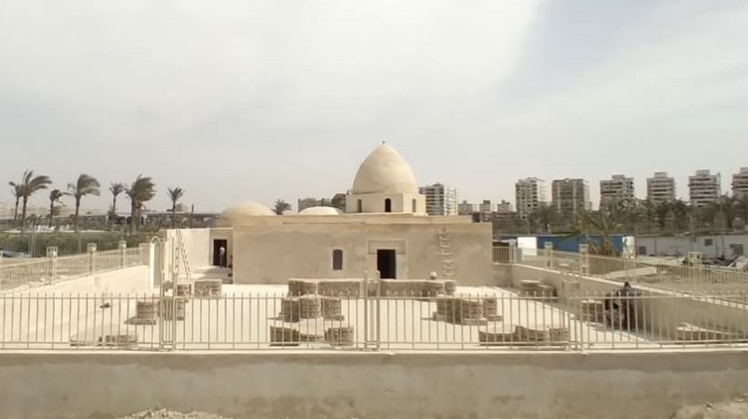Muhammad Tughaj Al-Ikhshidi, founder of the Turkish Ikhshidid state in Egypt, and the state in Egypt was a reward for him from the Abbasid Caliph in his time for resisting the attempts of the Fatimids to enter Egypt and was able to achieve independence in Egypt in 940, and today the anniversary of his departure comes, as he left our world on this day, July 25 of In the year 946, it is known that the Al-Faqai Mosque and Mashhad Tabataba, which were recently rescued, are the last remains of the Ikhshidid era, so what happened in Mashhad Tabataba?
First: We want to present Mashhad Tabataba, as it is said by Dr. Osama Talaat, Head of the Islamic, Coptic and Judaic Antiquities Sector, and Professor of Islamic Archeology: Mashhad “Al Taba Taba” is a mausoleum that was established in the fourth Hijri century, the tenth century AD, built by Muhammad bin Tughaj Al-Ikhshidi The founder of the Ikhshidid state, between the years 935 and 946 AD, with an attached mosque consisting of a square with a length of 18 meters, built of "brick" bricks, and in the eastern wall there is a mihrab.
As for the details of the story of transferring the scene within the framework of efforts to save and protect the scene, which was suffering from its poor architectural condition, it goes back to February 11, 2021, the Ministry of Tourism and Antiquities announced the start of work to dismantle and transfer the archaeological “Al Tabataba” scene from its current location on the eastern side of Ain Al-Sira, to the opposite side on the edge of Ain Al-Sira next to the National Museum of Egyptian Civilization, in order to preserve it from water leakage inside, and this came after the completion of the necessary engineering studies and the approval of the Permanent Committee of Islamic, Coptic and Jewish Antiquities.
On April 2, 2022, the Ministry of Tourism and Antiquities announced that it had completed a project to save, transfer and restore the Al Tabataba scene in its new location near the National Museum of Egyptian Civilization in Fustat, as part of efforts to save and protect the scene, which was suffering from poor architectural condition due to the high level The sulfur water in its old location on the edge of Lake Ain Al-Sira, where the height of the water reached about 2.70 meters, which affected its structural condition, so it was necessary to disassemble and move the scene to a far and safe place to preserve it, while following all recognized scientific methods during its dismantling and transfer.
Dr. Mustafa Waziri, Secretary-General of the Supreme Council of Antiquities, confirmed at the time that the work of moving and restoring the scene was carried out in accordance with the necessary engineering and construction studies carried out by specialists from the restorers of the Supreme Council of Antiquities, and after the approval of the Permanent Committee of Islamic, Coptic and Jewish Antiquities.
He added that all the project works were carried out under the supervision and implementation of the production unit of the Supreme Council of Antiquities and the specialized archaeological zone, and the project works began in January 2021 at a cost of 6 million Egyptian pounds, funded by the Ministry of Housing, Utilities and Urban Communities.
The Secretary-General of the Supreme Council of Antiquities explained that during the transfer process, a number of ancient tombstones and marble plaques were found, which were moved and reinstalled again.
 Mon, Jul. 25, 2022
Mon, Jul. 25, 2022